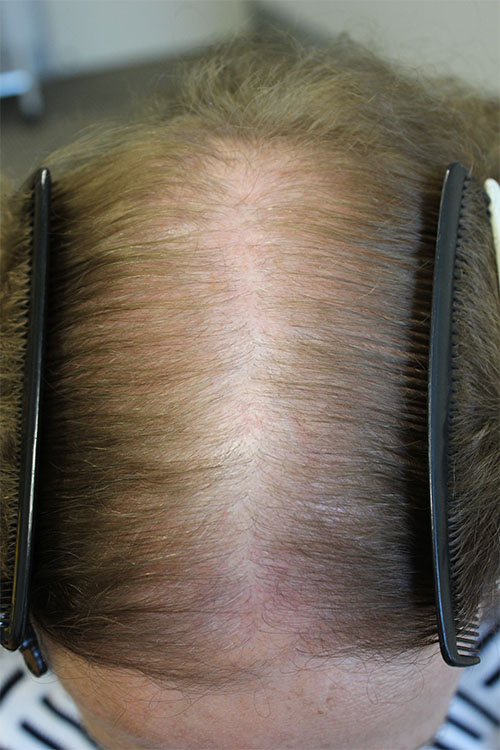Introduction to androgenetic alopecia
Androgenetic alopecia (also called male pattern hair loss in males, or female pattern hair loss in females) affects people with a genetic predisposition and hair follicle hypersensitivity to androgens. Terminal hairs are replaced by shorter and finer miniaturised hairs, because of the effect of androgens on scalp hair follicles. By the age of 70 years, approximately 80% of Caucasian males and 60% of Caucasian females are affected.
Male pattern hair loss (see photos here) starts as a receding hairline on both temples (bitemporal recession), and advances to baldness on the scalp vertex.


Female pattern hair loss (see photos here) presents initially with diffuse thinning that leads to a widened part line on the crown and a smaller ponytail volume.


In both males and females, the frontal hairline is commonly more sparse. Episodic bursts of excessive hair shedding are common.
Female pattern hair loss is accelerated by conditions associated with androgen excess (eg polycystic ovary syndrome). More rarely, it is associated with androgen-secreting tumours. Less than 5% of females with androgenetic alopecia have a raised serum androgen concentration—susceptibility to the condition relates more to end-organ hypersensitivity to androgens. Routine measurement of serum androgen concentration is not required unless the patient has other features of virilisation (eg irregular menses, hirsutism, severe acne).
Exogenous steroids (eg danazol, dehydroepiandrosterone [DHEA]) or androgens (eg testosterone) can also accelerate androgenetic alopecia (see Drugs that can be implicated in hair-loss disorders for drugs that can cause alopecia). If an exogenous steroid is suspected to be contributing to the condition, stop the drug if possible.
